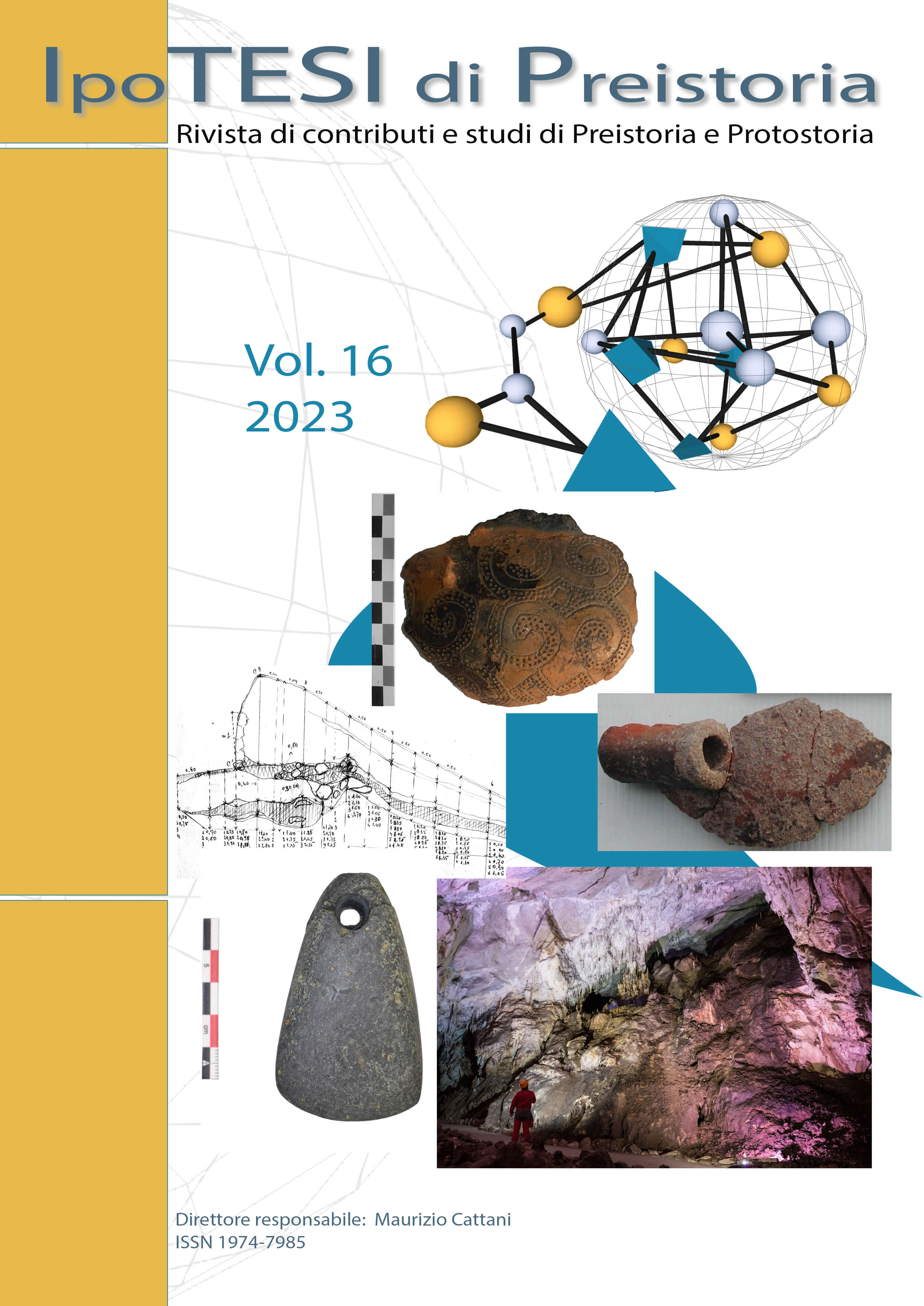Italian archaeology: mind the gender
DOI:
https://doi.org/10.6092/issn.1974-7985/18335Keywords:
Gender equality, Gender Archaeology, Italian Academy, National Scientific HabilitationAbstract
Gender equality is one of the “Sustainable Development Goals” defined by the United Nations for 2030. Women’s presence in the Italian archaeological academy diminished in the last decade negatively influencing the path toward a more equal gender distribution.
This paper explores this phenomenon by analysing the data for different positions (Full Professor, Associate Professor and Researcher), geographic areas and scientific-disciplinary sectors. A more detailed analysis is presented for prehistoric archaeology. Some quantitative data from the last 30 years are compared and discussed in this brief synthesis.
Results show a very complex pattern with marked differences in the present situation and in diachronic perspective. Despite a general trend toward a more balanced participation in the academic world, the scarcity of women in the researcher position and in the National Scientific Qualification as Associate Professor is a possible signal of slowdown or reversal of trend towards gender equality affecting the new generations.
References
ACANFORA M.O. 1966, Pia Laviosa Zambotti, BPI, 75, pp. 199-208.
BATTAGLIA G., SARÀ G. 2014, Jole Bovio Marconi, in GUIDI A., a cura di, 150 anni di Preistoria e Protostoria in Italia, Studi di Preistoria e Protostoria 1. Firenze: Istituto Italiano di Preistoria Protostoria, pp. 954-963.
COOPER S. 2018, How to Be Successful Without Hurting Men’s Feelings. Kansas City: Andrews McMeel Publishing.
DE PASCALE A. 2014, Virginia "Ginetta" Chiappella e Milly Leale Anfiossi: il contributo di due donne all’archeologia pre- e protostorica ligure, in GUIDI A., a cura di, 150 anni di Preistoria e Protostoria in Italia, Studi di Preistoria e Protostoria 1, Firenze: Istituto Italiano di Preistoria Protostoria, pp. 409-416.
DI PILLO M. 1993, Corsi di Laurea, in BATTISTELLI P., BETTELLI M., DI PILLO M., FARINA F.R., LEVI S.T., MOFFA C., REGGI A., SQUADRONE F., VANZETTI A., La laurea non fa l’archeologo, Atti della Tavola rotonda, Roma 8 maggio 1992. Mantova: SAP.
DÍAZ ANDREU M. 2000, Identità di genere e archeologia: una visione di sintesi, in TERRENATO N., a cura di, Archeologia Teorica. Sesto Fiorentino: All’Insegna del Giglio, pp. 361-388.
GERO J.M., CONKEY M.W. 1991, Engendering archaeology: Women and prehistory. Social archaeology. Oxford: Blackwell.
GUIDI A. 1988, Storia della Paletnologia. Bari: Laterza.
GUIDI A., a cura di, 2014, 150 anni di Preistoria e Protostoria in Italia, Studi di Preistoria e Protostoria 1. Firenze: Istituto Italiano di Preistoria Protostoria.
HAMILTON S., WHITEHOUSE R.D., WRIGHT K.I., a cura di, 2007, Archaeology and women: ancient and modern issues. London: Routledge.
LEVI S.T. 2001, Women’s Contribution to the Field of Prehistoric Archaeology in Italy, Origini, XXIII, pp. 191-223.
MILLEDGE N.S., a cura di, 2006, Handbook of gender in archaeology. Lanham: AltaMira Press.
MOEN M. 2019, Gender and Archaeology: Where Are We Now?, Archaeologies, 15, pp. 206-226.
PERONI R. 1992, Preistoria e protostoria. La vicenda degli studi in Italia, in AA.VV. Le vie della preistoria. Roma: Manifestolibri.
SØRENSEN M.L.S. 2000, Gender Archaeology. Cambridge: Polity Press.
http://cercauniversita.cineca.it/php5/docenti/cerca.php
https://abilitazione.mur.gov.it/public/index.php
Downloads
Published
How to Cite
Issue
Section
License
Copyright (c) 2023 Sara Tiziana Levi

This work is licensed under a Creative Commons Attribution-NonCommercial 3.0 Unported License.




